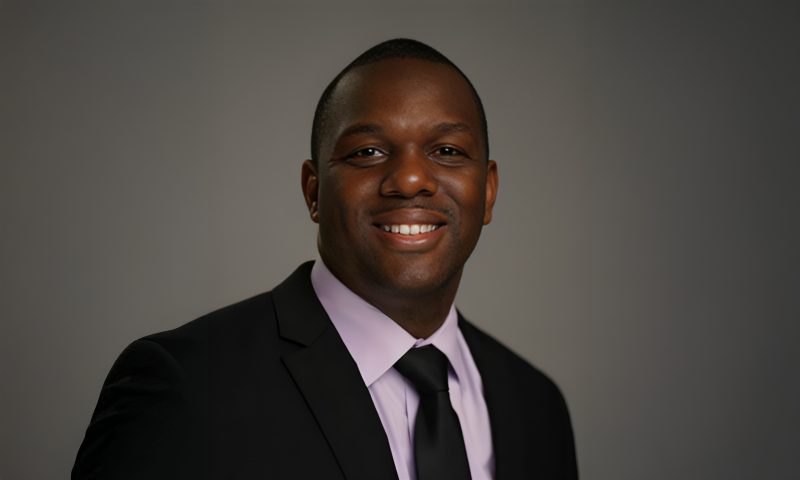Dr. Philip Boayue is a seasoned executive leader with a strong background in educational leadership and staff development. A former principal of Shaw Academy and current administrator in Durham Public Schools, he has led schoolwide initiatives, managed academic programs, and cultivated positive learning environments. Dr. Boayue is known for his expertise in strategic planning, team collaboration, and instructional leadership. His leadership has consistently enhanced student performance and improved teacher effectiveness through innovative strategies. Specializing in turnaround school diagnostics, Dr. Boayue brings a results-driven approach to school improvement. He also serves as a Warrant Officer in the United States Army Reserves.
When I assumed the principalship at Shaw Academy, the school was facing a profound crisis. With a graduation rate of 56%, over 600 annual disciplinary referrals, and designation as a failing school by the state, it operated more like a penal institution than a place of learning. My vision was to create a safe, nurturing, and productive professional learning community that would support students in becoming globally competitive and productive citizens.
Shaw Academy served some of the most underserved and marginalized youth students dismissed from their base schools for attendance, behavioral, or other illicit concerns. The school’s culture and discipline practices were punitive and exclusionary. It was evident that systemic change was needed change rooted in equity, compassion, and high expectations.
We centered our turnaround strategy on restorative practices, specifically the implementation of social circles. Restorative social circles are structured, facilitated group conversations designed to build community, promote accountability, and repair harm.
Prompts such as “What do you want your school to feel like?” “What determines your success?” and “What motivates you to learn?” gave students a voice in shaping their educational experience.
We developed a tiered circle system aligned with best practices:
Tier 1 Circles: Universal, core building circles held during homeroom and core classes.
Tier 2 Circles: Targeted circles for restoring relations or handling conflict, facilitated by school counselors or administrators.
Tier 3 Circles: Intensive restorative meetings focused on harm mending, used for serious incidents or re-entry procedures.
These circles helped students and staff build trust, express themselves, and take part in shaping their school environment.
Our administrative team and school improvement team embedded restorative practices into the fabric of school life. We conducted Focus Friday events biweekly, dedicated to social-emotional learning and circle facilitation. Staff circles supported team building and modeled the expected behavior for students.
Initial implementation was not without obstacles as we faced challenges such as, lack of staff training or buy-in, time constraints within a fixed bell schedule, and competing interests of daily tutoring and remediation plans, and skepticism from some faculty due to the school’s high needs population.
Intentional leadership and consistent communication helped overcome these barriers. We emphasized that restorative practices did not replace accountability but redefined it.
Our Data-Driven Strategy was intentional as we used student feedback and behavior data to refine interventions. Our goal was to extract student feedback on their learning, social experiences and perceived barriers to success and created targeted interventions to help students be proficient. By identifying early signs of academic and behavioral concerns, we created individualized support and action plans. This proactive approach prevented issues from escalating and supported student success.
Moreover, we made it a priority to engage families in the restorative process. Parent involvement in circles provided crucial context, helped repair strained relationships, and increased home-school collaboration. These partnerships were essential in supporting students who previously felt disconnected from both school and family structures. Restorative practices thus extended beyond the walls of the school, reaching into the home and broader community.
The outcomes and impact from the transformation was dramatic. Shaw’s graduation rate increased from 56% to 94% in the first year, remaining in the 90s over the next three years. The discipline rate decreased from 76% to 8% during that same period and state status designation changed. Shaw exited the North Carolina Department of Public Instruction’s Comprehensive Support C Improvement (CSI) category.
Benefits of Restorative Circles and Best Practices for Success:
Restorative circles significantly improved school climate as it reduced disciplinary incidents, and increased student engagement. They fostered greater emotive intellect and empathy, empowered students through their voice and action, and addressed racial disparities when executed with equity in cognizance. Our success was anchored in several best practices: training a core circle team of counselors, administrators, student leaders, and reliable teachers; partaking circles into routines through biweekly sessions and mentoring periods; using equity focused prompts to reflect on character, inclusion, and fairness; tracking participation and outcomes to measure impact and adjust strategies; and ensuring administrative modeling to prioritize circles as a schoolwide priority.
In conclusion, restorative practices were instrumental in Shaw Academy’s transformation. By moving from compliance to cultural transformation, we created a safe, supportive, and equitable environment. Restorative circles provided the foundation for community building, healing, and student empowerment. For schools seeking meaningful change, especially those serving high-needs populations restorative practices offer a sustainable, student centered pathway to success.




